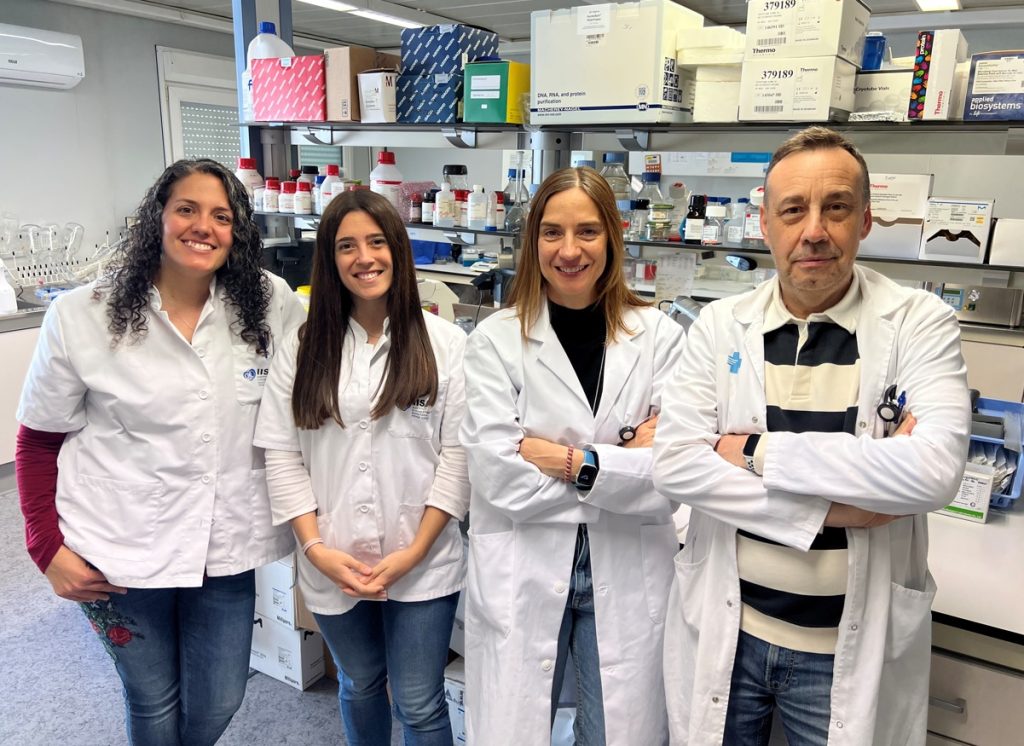
A study published in the prestigious Cell Metabolism journal and led by the Diabetes and
Associated Metabolic Diseases (DIAMET) research group of the Pere Virgili Health Research
Institute (IIPSV) and linked to the Joan XXIII University Hospital of Tarragona, has made it
possible to discover the mechanism through which adipocytes (the cells that primarily compose
adipose tissue) produce leptin, one of the main hormones that regulates appetite. It has also
been identified that this new mechanism regulates the biological clock of fat cells. In fact, today
it is known that adipocytes have their own internal clock (independent of external factors such
as light), which is essential for adipose tissue to perform its functions correctly.
The historical discovery of leptin as a hormone secreted by adipocytes in the 1990s led to a
paradigm shift, as it showed that the body fat must be considered an active endocrine organ
that regulates satiety and body weight. From that moment, even though numerous scientific
papers have studied how leptin acts in the central nervous system (it inhibits the intake by
producing the feeling of satiety) and why in obese people this mechanism does not work
correctly, no significant advances had been made regarding the production process of this
hormone in adipose tissue.
This research, which has received more than one million euros from the Fundación “la Caixa”
and from the Agencia Estatal de Investigación (Ministerio de Ciencia e Innovación), represents a very significant milestone not only from the physiological point of view (since it helps to improve
understanding of the biological processes that control body weight), but also for addressing
metabolic diseases such as obesity.
In the words of Sonia Fernández-Veledo, researcher at the IIPSV and head of DIAMET: “If
everything works correctly, when we eat, the levels of leptin in the blood increase. This hormone
is responsible for sending the satiety signal to our brain. Obese people produce more leptin than
thin people, but in turn, a phenomenon known as leptin resistance develops, which means that
the body does not respond to this hormone. Therefore, people with obesity have the mechanism
of satiety altered. Our study not only demonstrates the mechanism by which adipocytes produce
leptin, but also why obese people’s fat does so excessively.”
According to the World Health Organization (WHO), more than one billion people worldwide are
obese, data that continues an upward trend. WHO also warns that obesity is directly associated
with type 2 diabetes, cardiovascular diseases and those related to mental health, hypertension,
stroke and various forms of cancer.
Succinate, key in this process
Succinate, an energetic metabolite that can also act as a hormone through its SUCNR1 receptor,
plays a very important role in all these processes. The DIAMET group is an international
benchmark in the study of this metabolite in the context of inflammatory and metabolic diseases
(such as obesity and diabetes). For many years, a mainly inflammatory role has been attributed
to this metabolite, in addition to being identified as a biomarker of metabolic dysfunction in
diseases such as obesity and diabetes (in this type of patients its levels are chronically elevated).
However, in recent years, the DIAMET group has shown that this is a complex system, since
succinate levels also increase (although transiently) in some physiological situations, such as
when we eat food.
In the words of Sonia Fernández-Veledo: “It is in this context where we believe that succinate –
through its receptor SUCNR1- naturally regulates energy homeostasis, that is, the internal
functions of our organism that control the balance between energy intake and its expenditure.
In this study we demonstrated that one of the mechanisms is through the production of leptin
and, therefore, through the feeling of satiety, but we anticipate that it will have other
physiological functions acting on other tissues. In addition, we demonstrate that succinate
would determine leptin oscillations throughout the day by controlling the biological clock of adipocytes. In obese people, this mechanism is hyperactivated, which would partly explain the
elevated leptin levels.”
This scientific advance represents a turning point in the treatment of obesity and opens the
doors to future studies aimed at investigating not only other metabolic functions of succinate,
but also at exploring therapies that allow restoring this mechanism, thus achieving that its levels,
as well like those of the hormone leptin, can be stabilized and it can recover its role in regulating
the feeling of satiety.
The study has received funding from the CaixaResearch Health Research Call (Fundación ”la
Caixa”) and from the Agencia Estatal de Investigación (Ministerio de Ciencia e Innovación). It has
been possible thanks to the joint effort and commitment of several institutions: the Centro de
Investigación Biomédica en Red – Diabetes y Enfermedades Metabólicas (CIBERDEM), the CIBER
de Fisiopatología de la Obesidad y Nutrición (CIBEROBN), the Centres de Recerca de Catalunya
(CERCA), the Rovira i Virgili University, Joan XXIII University Hospital of Tarragona, the Instituto
de Investigaciones Biomédicas Alberto Sols, the Institut d’Investigació Biomèdica de Bellvitge
(IDIBELL), the Institut d’Investigacions Biomèdiques (IBI) Sant Pau, the Universitat Autònoma de
Barcelona (UAB), the Institut d’Investigació Biomèdica de Girona (IDIBGI), the Universitat de
Girona and the Universitat de Barcelona.
Bibliographic reference: SUCNR1 signaling in adipocytes controls energy metabolism by
modulating circadian clock and leptin expression. Villanueva-Carmona T, Cedó l, Madeira A,
Ceperuelo-Mallafré V, Rodríguez-Peña M-M, Núñez-Roa C, Maymó-Masip E, Repollés-De-
Dalmau E, Badia J, Keiran N, Mirasierra M, Pimenta-Lopes C, Sabadell-Basallote J, Bosch R,
Caubet L , Carles Escolà-Gil J, Fernandez-Real JM, Vilarrasa N, Ventura F, Vallejo M, Vendrell J,
Fernández-Veledo S. 2023, Cell Metabolism 35, 1–19 April 4, 2023.
https://doi.org/10.1016/j.cmet.2023.03.004
Nature Reviews Endocrinology has published a “Research Highlight” on this article: